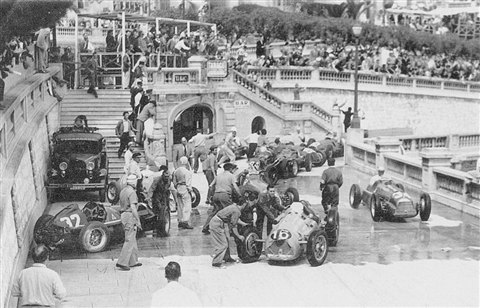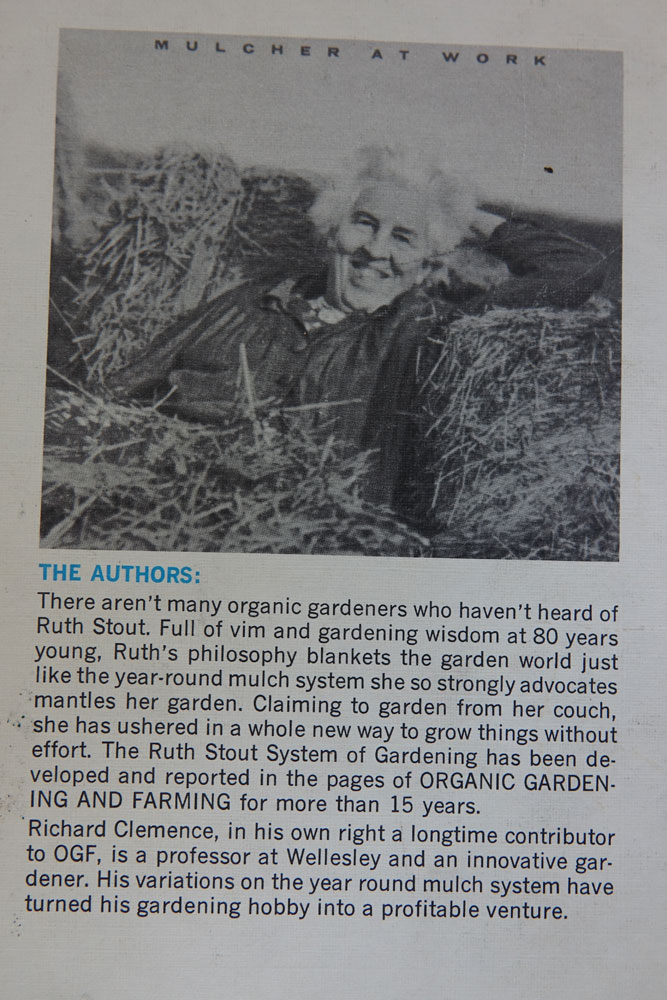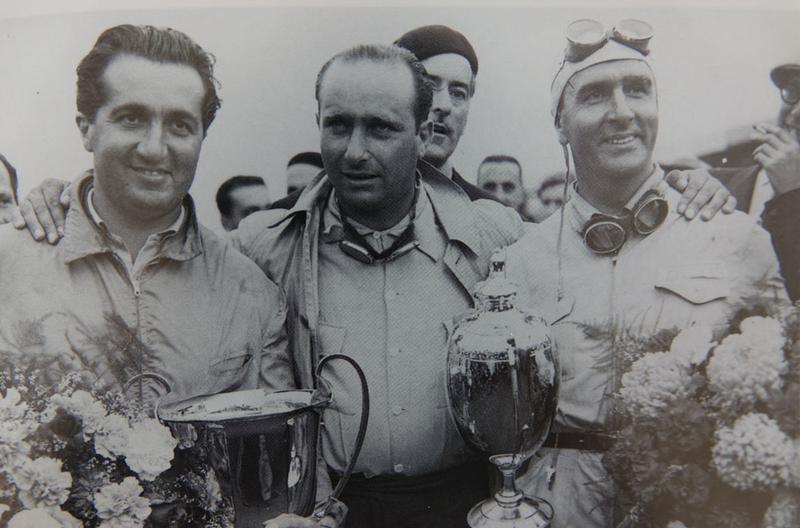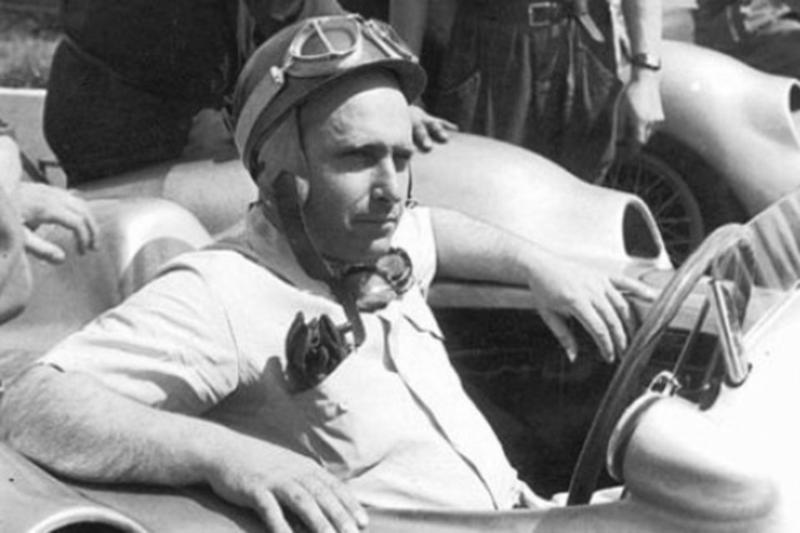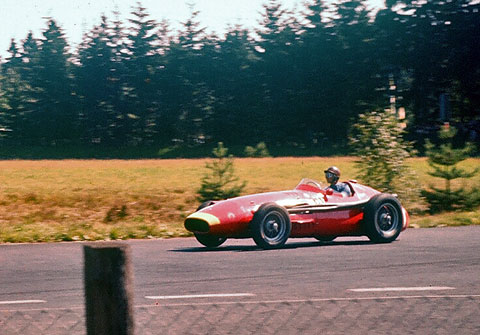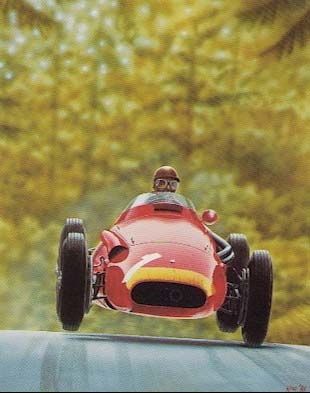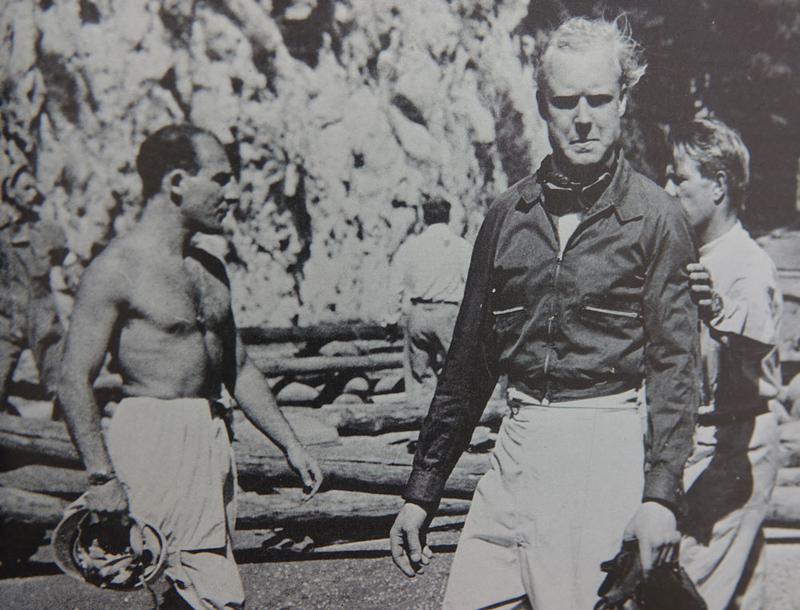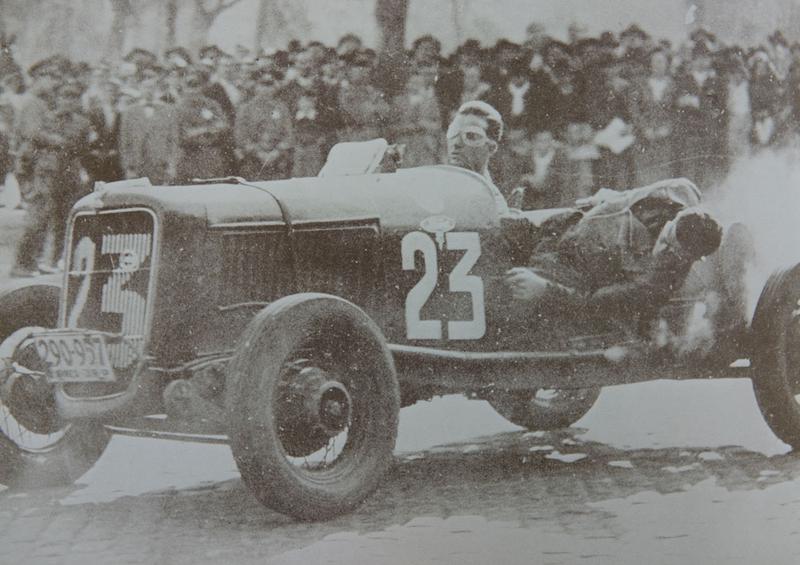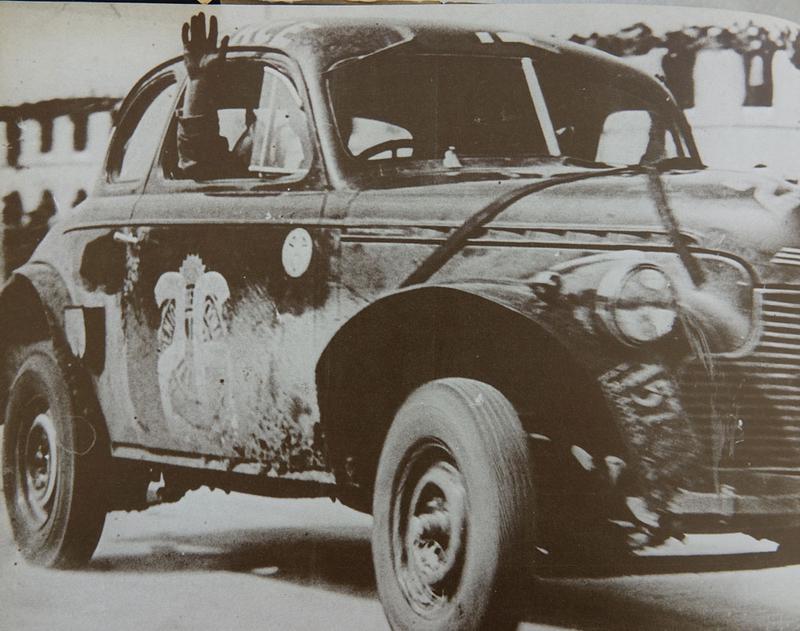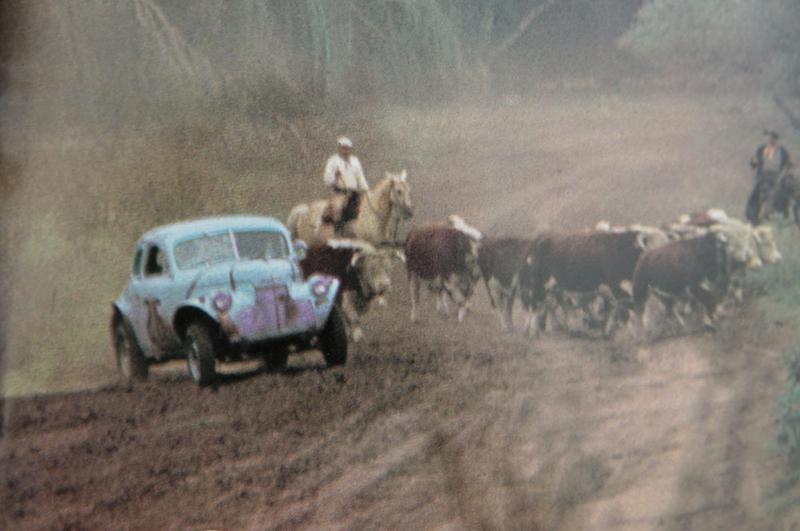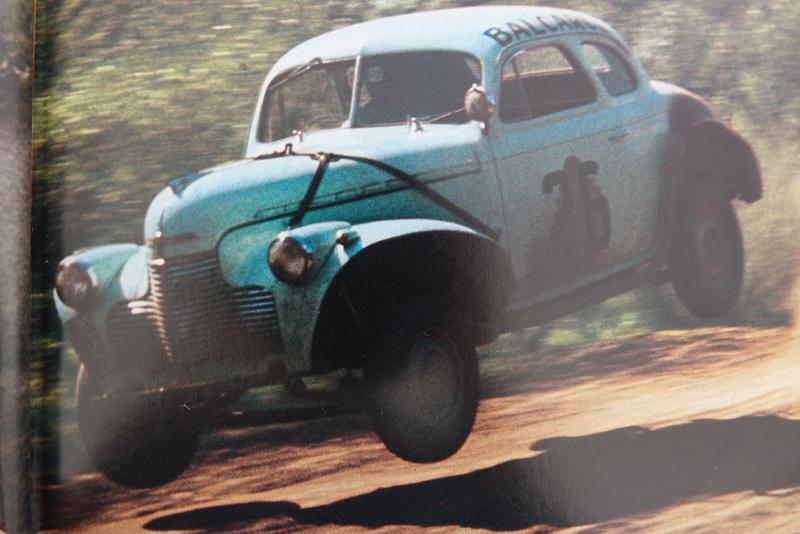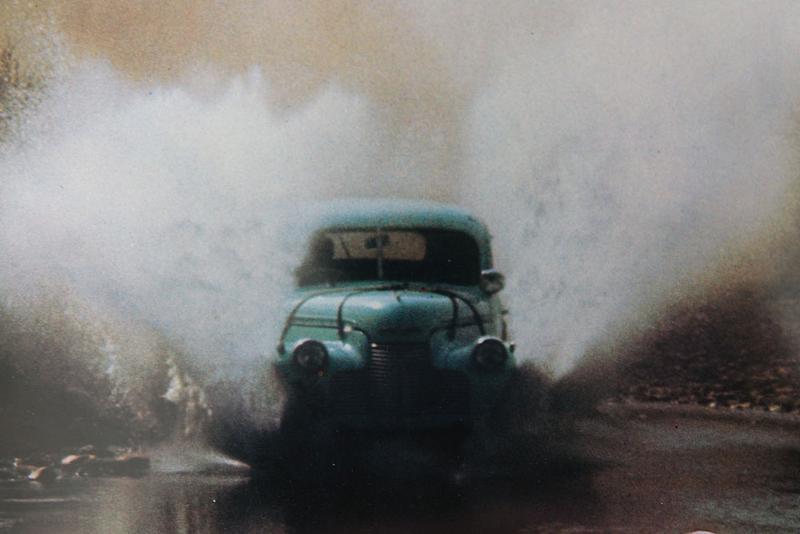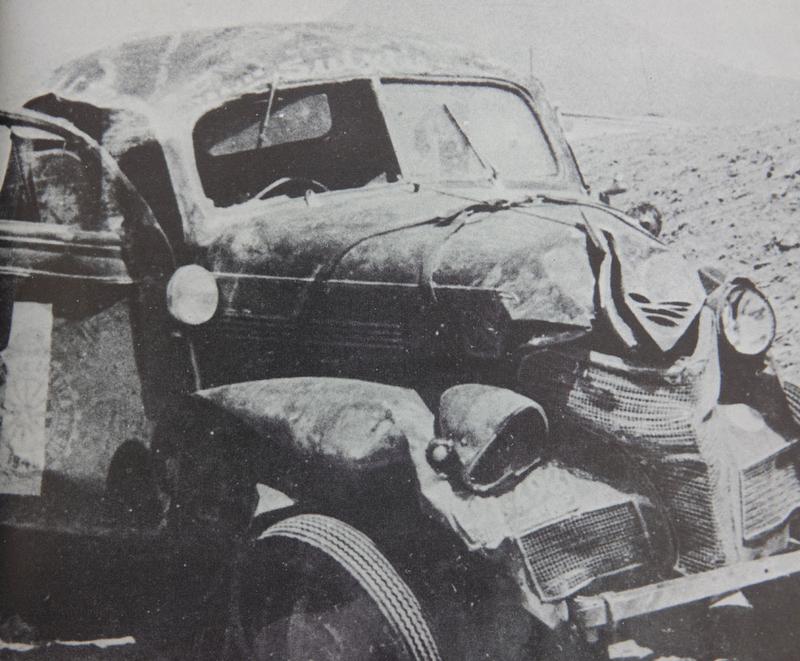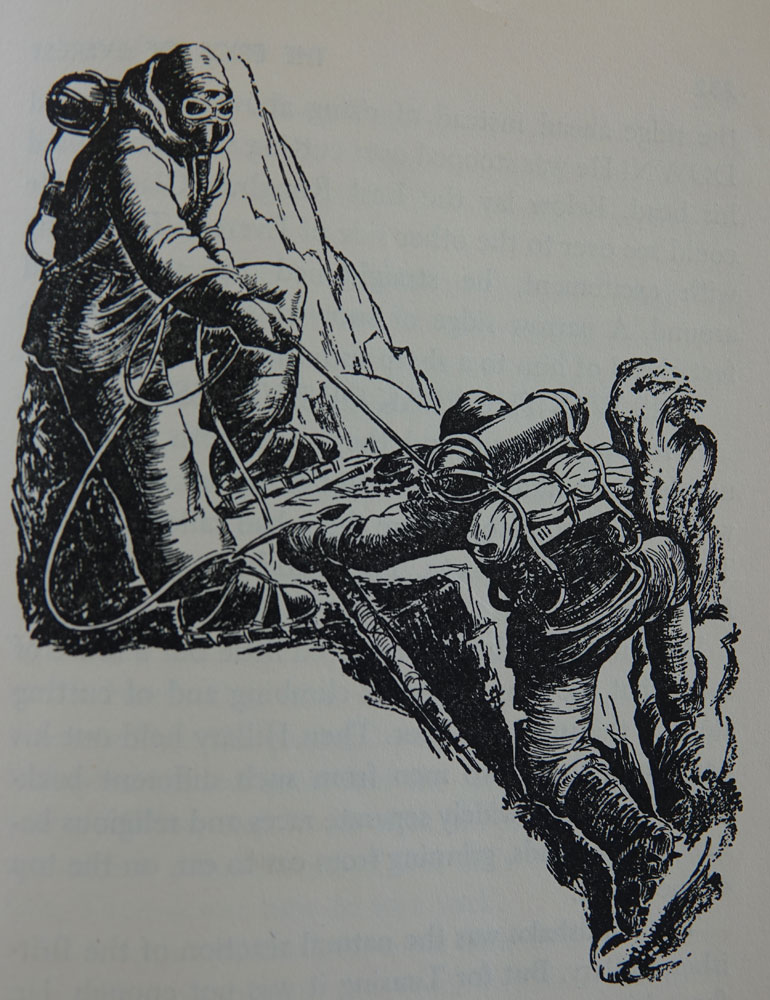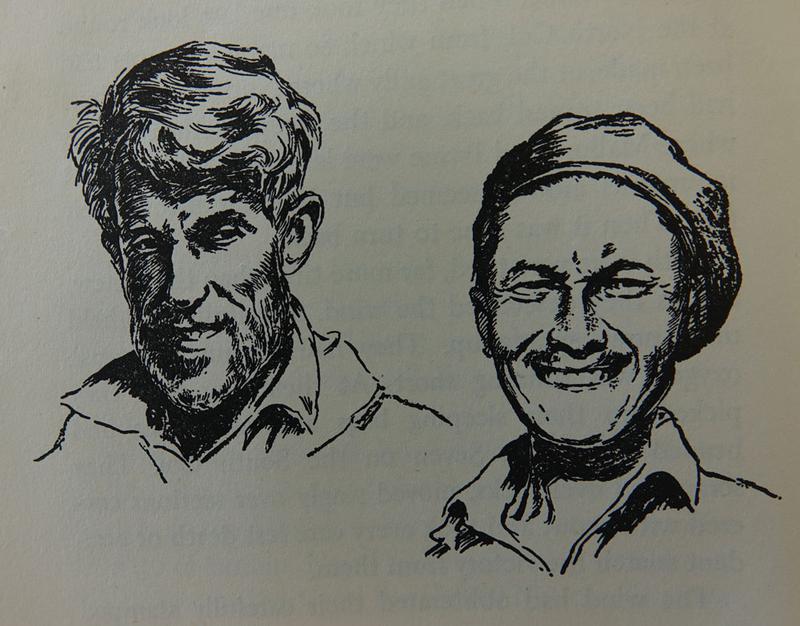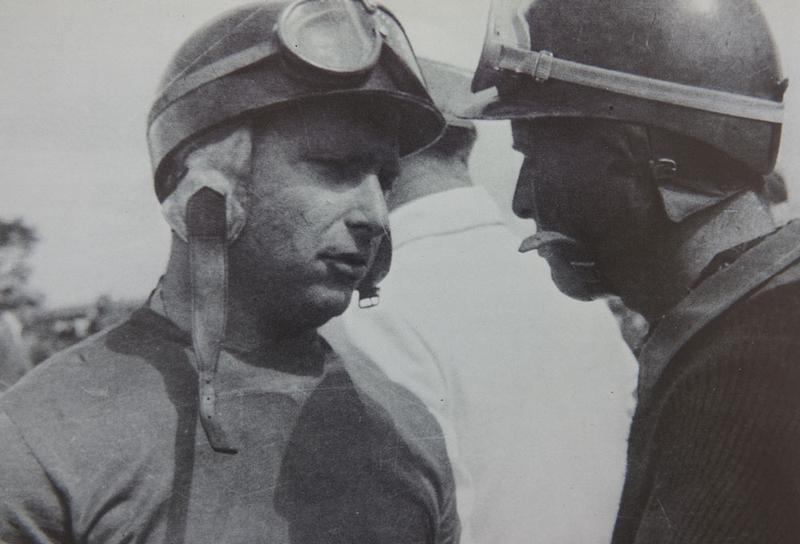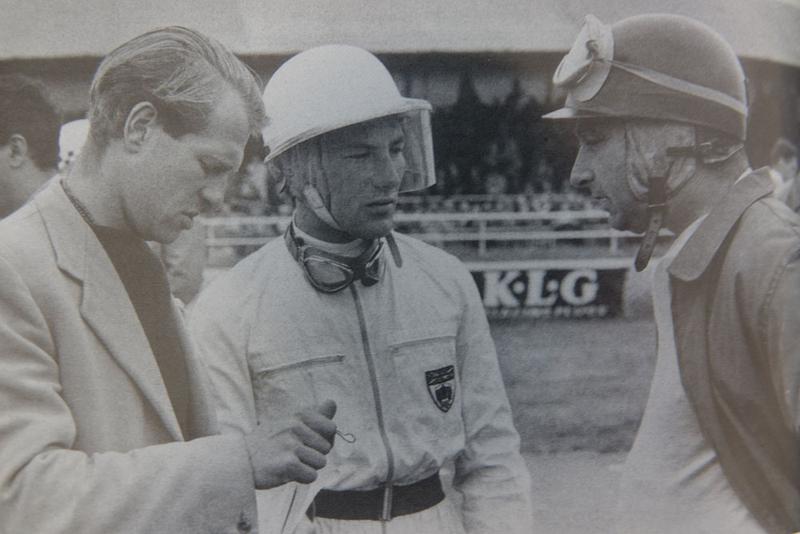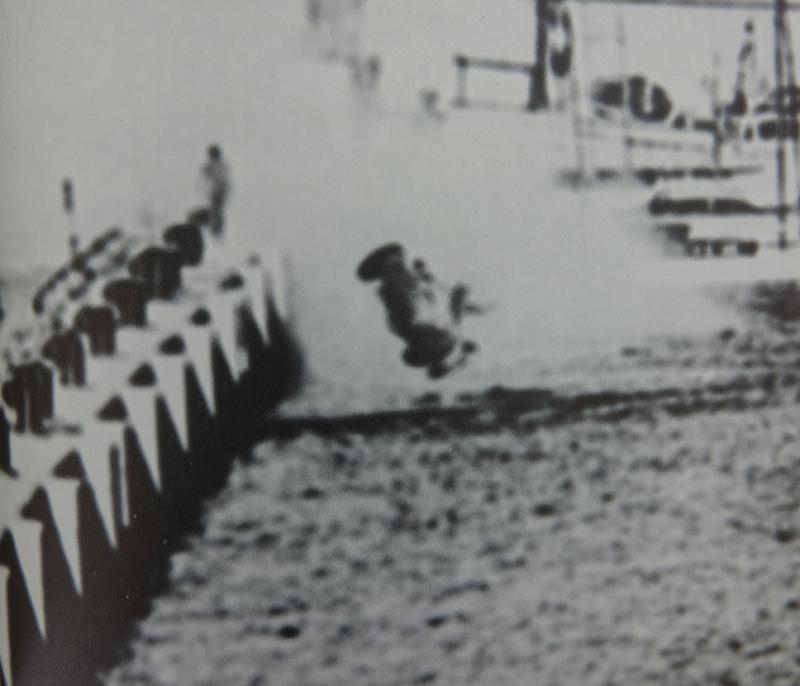Page 26
The Maestro - A Lesson in High Speed Living
What are we searching for? What is it we need to make our lives pleasanter, not to say happier?
Lots of money? But do we know a single rich person who is noticeably happy? A trip around the world? Well, what will you do when you get back home again? The boss’s job? But he looks harried and has ulcers. You’re getting old? So are we all, and it isn’t painful, once you get used to it. Beauty? It doesn’t stand by you. Prestige? Trying to hang onto it is a wearing job. Success and recognition in your art? Try mastering the art of Living!
These were the words of Ruth Stout, an elderly lady of close to 80 years of age who was largely unknown apart from her, end of life “fame” as a promoter of mulch gardening – something she started writing about at about 70 years of age. She wrote a book called “If You Would Be Happy” as she approached 80, and I have quoted one of the gems from that book. Ruth was a person who lived a very active, pleasant, and fulfilled 96 year life, free from undue world recognition, in a little Connecticut community called Poverty Hollow!
I do wonder how many seemingly small and unknown people have a view of life that surpasses the “wisdom” of many of the world’s supposed philosopher heavyweights? Ruth’s simple yet profound, grass roots book is full of thought stimulators and she undercuts many philosophers who generate huge volumes of tangled words while attempting to deal with the same issues. What good is blather that doesn’t convert to useful application on the cutting edge of time? A rather telling aspect of a philosopher’s theorizing and advice, great or small, is “what did their actual ‘Life’ look like?” You’ve got one life to live and that’s all you can give! “You are what you do”, or “you were what you did”, are powerful analysis concepts! Little Ruth lived and died and left an inspiring, and enduring legacy on all fronts! Her words matched her reality! She was a “doer” as well as a living spark connected in positive ways to those around her. She was small but she was huge.
A somewhat similar “doer” with positive connections to others wrote the following after living 68 years, most spent as a business man; Profit as a goal for our efforts fails in the same way and for the same reason that an attempt to capture happiness as an end in itself would fail. We all desire happiness. No one will doubt that this aspiration is most sought for. However, anyone who strives for happiness as an end in itself will never be happy. Such a person will probably be miserable. Happiness is a by-product of many other things. Many of these things are of themselves the direct opposite of what we might think of as happiness. Self-restraint, generosity, treating others as we are bidden in the Sermon on the Mount, all lead to happiness, but none of them is itself happiness. Long experience has, however, shown that these seemingly opposite actions are the only road we can take which will finally make a happy person. - - - - This can be done first by the development of man’s latent abilities - - - - The progress to be made is very great compared to anything yet seen, since we are dealing with the development of that marvellous being, man.
This last section comes from the 1951 book, Incentive Management, written by James F. Lincoln who established his right to comment on such matters by building the Lincoln Electric Company, an outlier firm that is still unique 50 years after the death of James. James Lincoln was a doer and realized that others benefited from an environment that encouraged and allowed them to be “doers” as well. Both James and Ruth appreciated the need for action and creativity and self expression, as well as positive interconnections, if a Life was to be successful and happy.
I use these two stories as my kick-off and I will get back to them. But now, let’s jump to a personality who arguably went a long way towards mastering a Dramatic Art as well as seeming to do quite well at mastering the broader Art of Living! You might call him a “high speed lesson on Living”!
What we know as Formula 1 auto racing officially began in 1950. The winner of the first F1 race that year as well as the eventual year’s champion was an Italian named Giuseppe Farina driving an Italian Alfa Romeo racing car. One of his team mates on the Alpha team, and runner up for the 1950 season, was Juan Manuel Fangio, a 39 year old Argentinean who was new to European racing. Farina had been Italian Champion in 1937, 38, and 39, prior to the war bringing organized racing to a halt. He was educated, skilled, and he was experienced.
A hint of what was to come occurred in the Monaco Grand Prix of that year. Early in the race, a huge crash scene developed on a blind corner after a wave from the harbour washed up onto the track. Car after car rounded the corner and added to the junk pile. But Fangio, who was leading the race, slowed down prior to rounding the deadly corner and carefully weaved through the carnage and proceeded to set the fastest lap as well as winning the iconic race in his Alpha. Impressive! How did he do it? By chance, he had seen a photo of a similar crash that had occurred in a prior year at the same corner. As he approached the blind corner, he realized that the crowd was watching the corner rather than the approaching race leader. Fangio had his tip off and sensed the implications. He connected the dots! That broad sensitivity was associated with a man of many facets. And I do feel this incident is one small indicator of what made Fangio great. The man who gained the unofficial title of “The Maestro” had developed depth – he was not a one trick pony!
In 1951, Fangio won the driver’s championship. Early in the 1952 season he had a violent crash where one would have expected certain death, but he survived with a broken back, and was out for the remainder of the season. Again, in a way, the incident was a hint of the future. A major factor in the crash was extreme fatigue. Fangio had been caught in a situation where he had made promises that proved a seeming impossible challenge to keep as fluke circumstances beyond his control made it impossible to get to the non championship Monza race track without a marathon over-night driving effort. Fangio kept his commitment to the race organizers and to his friend Count Omer Orsi, but was worn out prior to the race, and a slight judgment error put his car into an end over end crash. Fangio was thrown out with his shoes left behind in the crumpled car. But his level of personal commitment said something about the man’s mind. The inner Fangio did things a certain way and a solid, reflective reputation resulted. Those who knew Fangio were impacted by the way Fangio was. And the details of his successes, in many cases, were linked back to the record of his past as well as to events of the moment.
He was back at it in 1953 but Alberto Ascari, the 1952 winner, took the annual driver’s award again, with Juan in second place. Ascari, 8 years younger than Juan, died in a crash in May of 1955, the fate of a high percentage of the drivers of that era where safety considerations were minimal. For Juan, a major personal victory did occur in 1953 and we are fortunate to have a very brief video record of a defining moment of that unusual situation. Again, a momentary spot light shone on a facet of a champion for those with foresight or hindsight to appreciate the vision.
Juan had had his death defying accident at the Monza track on June 8, 1952. He had driven a marathon personal race through the Alps in the 8 hrs before his arrival at Monza with a car on which the tires had been worn to the internal cords – a race that could have netted him fame had it been an official function. Then, in his sleep and food deprived, and stressed condition, a minor slip turned into an instant and major disaster where his life hung by a thread. Many lesser souls would have either retired from auto racing or at best been mentally rattled by a return to the high speed Monza setting.
But in September of 1953, he was back at Monza for the Italian Grand Prix of that year. In practice his car blew a tire while braking from 135 mph and went into a wild spin that left Fangio stiff and shaken. But the next day, the 13th, he was on the front row of the starting pattern along with Ascari and Farina. It was to be a classic race with the three world champions plus Onofre Marimon, Juan’s protégé, clumped, in the lead and in consistently close formation throughout the 300+ miles of speed. To understand the significance of what I am talking about, one needs to appreciate the level of skill and risk that was involved. Watch the video of the event. Notice the cars with no roll cages, no seat belts, and no specialized fuel tanks. There were minimal track safety features, minimal rescue and emergency medical backup, and mechanical design and construction techniques were crude by today’s standards. Notice the speed and the close racing conditions of the open wheel cars. Review the video of the death of Wolfgang Von Trips at Monza in 1961 to see what can happen when a slight mistake occurs. There is a video available touching on Juan’s 1952 crash but only the aftermath was captured on film. The Von Trips incident shows the frightening dynamics of a high speed crash.
So, in this high speed test of machines and human bodies and minds, what unfolded was a window on what made Juan Fangio. Typical of all the seasons in which he was world champion, he didn’t walk away with victory. Victory was always by a hair’s breath, but before he retired from the sport, Fangio was recognized as “The Maestro”. Only by analysing details of each year can you point to the factors that put Juan over the top. And the 1953 Monza race was a dramatic illustration of this “multi-facet” strength.
Fangio knew his fellow racers. He knew that both Ascari and Farina were champions, and Italians. They were racing in front of their countrymen in the major Italian Formula 1 event. Fangio knew that mistakes were common towards the end of long, fatiguing races, especially closely contested long races. And he anticipated that the “neck to neck” front runners would be very likely to cross the line of physics in their joint struggle to win. Thus Juan backed off slightly to avoid potential chaos and to await a chance to spring. And, indeed, on the second last corner prior to the straight to the flag, the “incident” occurred. A misjudgement by Ascari took he and Marimon out and threw Farina off line. The classic Youtube video only catches a fleeting glimpse of the error that let Fangio slip past and take the victory. The video fails to show the amusing fact that the flag man in charge of the chequered flag, failed to wave the flag out of shock at the surprise ending and Fangio and second place Farina made another lap before they were flagged down!
Later, Fangio stated, “It’s not so much physical endurance that counts in racing, the important thing is to find time to think of the race during the race”.
So, as the 1953 Grand Prix season ended, the 1951 champion was back in form and had conquered what could have been a powerful mental barrier. He had mastered the track that had almost killed him. The roll had begun.
In 1954, 55, 56, and 57, Juan won the World Formula 1 driver’s championship. Thus, in his seven full seasons of Formula 1 racing, he was champion five times and runner up twice. His 1952 crash put him out of action for that season.
Three World Champion Formula 1 drivers; Alberto Ascari, Juan Manuel Fangio, and Guiseppe Farina.
Pile-up at the 1950 Monte Carlo Grand Prix. Fangio reads the subtle signs, avoids the chaos, and wins the race!
At the 1:45 mark on the video you catch a split second view of the Ascari/Marimon crash that let Fangio slip to victory followed by Farina. Below we see the end result of the crash.
The video above shows the aftermath of Juan's 1952 Monza crash.
Above: The 1961 crash of Von Trips. At this point, car design was safer than a few years earlier but two cars touch tires and the high speed result not only killed Wolfgang Von Trips but several spectators as well.
James Lincoln's legacy impresses modern observers but notice in the news video how there is no appreciation of the unique personality that formed the enduring business system. It might be worth asking "why"! And such curiosity might lead to an eye opening realization! In a way, the blindness to underlying facts, illustrated in this video, is a huge lesson in support of many of the thoughts expressed on this website. How is it possible to not see obvious facts that are under the nose of every living personality?
Ruth Stout's gardening fame was simply a minor detail of her total life. She lived under the radar but she was making good use of her time from early on. Having a closer look at her life yields far more value than simply considering her ideas on mulch gardening. She was a thinking personality who thumbed her nose at convention and made good use of common sense.
So a snapshot of the first 10 years of modern Formula 1 racing makes Juan Fangio look like a major force, and rightly so. But if you look at the details of each year, the summary photo misses the impact of the embedded lesson. Impact of the “lessons”, might be a better statement. Each year was a battle with many skilled personalities interacting. Farina and Ascari were active in the years after their championships and new, younger players were constantly coming on the scene. The margin between Fangio’s raw driving ability and the skills of his competitors was not shockingly obvious. As with any professional sport, wins are often measured in fractions of seconds. But the snapshot can’t be argued with. Fangio won championships, plural. But he also won respect for his approach to life and his dealings with others, especially under pressured conditions. And he retired intact and lived a full life for over 35 years even after his high profile attack on the record books at an age where most Formula 1 drivers are already retired or dead.
I am an advocate of the view that when you see any personality who stands out in some way, good or bad, there are always lessons to be learned - lessons about that activity which is a domain of all of us - Living! Fangio was nick-named, “The Maestro”, in part due to his skill at doing 150 mph, 4 wheel drifts around corners while maintaining consistent control. I understand that in a race, he would slide around any given corner at high speed with a repetitive precision that few could match – thus “The Maestro”. But I would argue that the term is a wonderful definition when used in a broader sense, and to illustrate, let’s look at a closer view of Fangio.
(Towards the end of 2015, I came across this "joke" on the internet. A further explanation is written up lower on this page.)
Full face Snell 2010 helmet (post was made a few years ago)
Check
Double layer Nomex racing suit
Check
Hans device (head and shoulder support system worn to provide crash protection)
Check
5 point harness
Check
Roll Cage
Check
Massive steel balls
Check
In late 2015, I came across a website called Track Thoughts by Bill Wagenblatt. Wagenblatt had published photos that had been taken by Dean Adams, a then 24 year old US soldier who attended the famous 1957 Nurburgring race that was a capstone of the career of Juan Fangio. Dean had had the photos in a drawer for over 50 years. Two of these photos are used to the right.
In the reply section of the Track Thoughts post, someone with the handle toyotasupraman, posted the above joke, highlighting the lack of safety equipment in use during the time Fangio raced. Elsewhere I quote Michael Schumacher's statement that expresses a similar thought "There is no way you can compare me with him. What he achieved, at the wheel of fairly basic cars in just shirt sleeves and with no helmet, hardly bears thinking about. It wasn't even the same sport. No, I could never do what he did. That man was a hero." Schumacher may have been referring to Juan's South American racing days where helmets weren't worn, although the 1950ish F1 helmets were likely of marginal value, especially given all the other safety gaps.
An advantage of analysing historic figures who are now dead is that you can see past the dust that they and all their contemporaries kick up while they are still alive. As their history recedes slightly into the past, those still standing can see more clearly the trends and dynamics that were unfolding around the character. Knowing where those trends eventually headed is helpful in evaluating the impact on the personalities immersed in their earlier effect. Now, the sculpture is finished. What does the final product look like? How was it formed? What is the meaning of its detailed features? What information about the subject has come to light now that the excitement of the moment is past and critics have time to probe and analyse? Do we discover substance, admirable traits, dishonesty, rot, circumstantial effects, lessons to build on, lessons on things to avoid? Do we observe unexplained realities that hint at forces beyond the human sphere – types of seeming karma? Any personality is a small element in the huge System of Life. How was he or she entwined in the past, in his or her present, and in the onward flow of the System of Life? Having a familiarity with a past personality is like having a good friend who you know really well. If they are an outlier in a positive sense, even if you never met them, they may well have the potential to influence you more than a living personality, so long as you get to know them and listen to the words of their life imprint! Applicable substance tends to endure while immediate hype and fluff are blown away by the winds of time. Historic Living Examples have many gifts to give to those on the cutting edge of Life!
A riddle that I feel is valuable is to ask “If I want to model my life after true winners, how do I pick a winner?” The simple answer is “Wait until they cross the finish line and see if they are in the lead!” Ecc 7:1 wisely states “A good name is better than precious oil; and the day of death, than the day of one's birth.” The Bible does not give good press to birthdays. And none of us can brag up any great value to anyone until we have some experience internalized. So historic personalities have the advantage of having crossed the finish line of the race of Life – and their position is then clearly established. Replay data often shows details of "photo finishes" and relaxed analysis often reveals rule infractions or admirable background facts that might have been hidden by political smoke or faulted social outlooks.
Despite the high level of competition surrounding Fangio and the constant narrow margin of victory that characterized his years in the racing arena, he did deliver the goods with regard to being an overall winner. And he did it by eking out small but vital advantages on a very consistent basis, in a highly competitive sport. And that edge was rooted in a broad base of character, experience, and thoughtful growth.
During his Formula 1 days he saw about 30 of his peers die in accidents, a high percentage of the small F1 society. The “balls of steel joke” illustrated above tells of a time unlike the present. Racing drivers today are wrapped in an impressively developed cocoon of safety. Here is another impressive aspect of studying the past. Fangio was a much larger percent of the then current Life System than a driver is today. How anyone was able to ride the dynamic edge of the cliff of death for such a long period of time, is amazing. One slip in the racing cars of Fangio’s day and the likelihood of death was very high. Cars and tracks were crude and unforgiving by today’s standard. But to win, you are constantly pushing the same limits as the 30 drivers who went over the edge, while at the same time never coming close to equalling Fangio’s multi year record. This past “risk” reality combined with Fangio’s established record, makes him a gold mine of Life Lessons. And keep in mind the fact that Fangio lived to walk away. He climbed the mountain, AND he made it back down - not a simple combination when you are talking about scaling the highest peaks!
Younger drivers who Fangio raced against likely had the advantage of younger bodies and associate reflexes and strength. Interestingly, Fangio did practice a pattern of physical training to enable him to keep up to his younger competitors. And he did so at a time when few thought much about the practice. And younger drivers likely also underestimated the mind of Fangio that had had plenty of training from his childhood on. He came from a very solid family and had a surreal racing history in South America prior to appearing on the European scene. Some of his European Grand Prix wins were linked to his appreciation that younger drivers tended to be aggressive hot heads. He let them lead and battle each other and make associated mistakes prior to pushing harder and winning the race due in part to the younger drivers having knocked each other out via accidents or by precipitating mechanical failures in their cars.
Fangio lived with cars and mechanical involvement from an early age and his racing activity in Argentina and South America was like the wild west of auto racing. Long distance cross country races on public roads were the norm and drivers needed to be mechanics as well as drivers. Endurance was an issue due to marathon driving sessions some of which took place in the high Andes where oxygen issues and altitude sickness were major challenges. When Fangio arrived in Europe it was a bit like a farm kid mixing with city kids – he had been exposed to a broad range of life facets and had a depth of multi discipline judgment that most of the younger European drivers lacked. Fangio KNEW that cars could break and that getting your horse through an entire race was part of the game. His understanding of machines enabled him to read his car and run it hard yet smoothly and with a soft hand where it was needed.
In the 1957 Monaco Grand Prix, Fangio could sense an uncontrollable rivalry between his three young opponents, Stirling Moss, Mike Hawthorn, and Peter Collins. Fangio stayed back and indeed, a mistake by Moss ended up taking out the other two drivers with Fangio, in seemingly typical form, slipping through the chaos and motoring on to the win. Here we see the disgruntled trio near the crash site.
Fangio also appreciated the fact that he was only part of a large system. The manufacturer and their car was a system component. The team mechanics were a component. Team mates were a component. And the driver and the many factors impacting his performance was a component. Personal circumstances were of importance. Competitors and their makeup were part of the system. Rules and officials and even spectators were components.
Fangio was good to his mechanics and split his winnings with them in that he realized how important their contribution was to his winning. And he insisted on having specific mechanics dealing with his car so he had a personal connection with these vital men. Fangio insisted, during his Ferrari days, that the normal Ferrari approach of a team of mechanics all working on a team of cars, would not work for him. He got his way. How many times did that small edge put the Maestro over the top? He appreciated the core human aspect of all living systems.
Fangio was a competition giant. He wanted to win and pushed himself to do so. After his first win, in a Formula 1 car, in Argentina in 1949, he stated that “When I finished my lap of honour and shut the Maserati’s engine off while coasting into the pits, I felt entirely transfigured, different somehow. It awakened in me one of the most intense pleasures of my life.“ It was estimated that there were 300,000 spectators at that race with 30,000 of them being from Fangio’s home town of Balcarce. And Fangio was very loyal to his home town and in return its people were very supportive of “their boy.”
In 1955, at another major race in his home country, he endured driving the entirety of a race where the track temperature was 50 degrees C or 122 degrees F. Many drivers quit or traded off. Stirling Moss stopped and rolled out of his car to rest and was dragged off to a hospital because emergency staff thought he had heat stroke and that his protests were a sign of associated mental impact. On top of the natural heat, an exhaust pipe in Fangio’s car was heating the leg space area and cooking his leg. He drove to the end and to victory but took three months to recover. Again, a revelation of what was inside Fangio. He had mental powers that were unusual. And his win was a tribute to the universal principles of success - drive and perseverance – not a vain and simple victory over other drivers.
A meaningful digression on the last point; when Edmund Hillary and Tenzing Norgay were close to the top of Mt. Everest in 1953, Tenzing was looking weak and Hillary expressed concern for his welfare. Tenzing, who was on his 4th push for the summit simply waved upwards. Those with a goal anchored in their mind are the ones who reach the summit. Fangio had that achievement and winning quality. Inspiring!
But despite that will to win, his conduct towards other competitors was impressive. He was a gentleman under pressure and a supportive personality to all. That solid nature had an impact on the way life unfolded around him – others respected him and treated him with respect and appreciation. To illustrate, in 1956 he had a frustrating mechanical failure in his Ferrari and the rules allowed another team driver to give up his car. Peter Collins, who himself had a very good chance of clinching the driving championship that year, unselfishly and without any pressure other than his own desire, offered his car to Fangio and allowed Fangio to clinch the 1956 championship. Collins was young and realized Fangio was close to retirement at 46 years of age (Collins was 25) and said that it was an easy move because of his respect for Juan and because he had lots of time yet to race, not realizing he would be dead in less than two years. Again, a little detail of solid living put the Maestro over the top. Collins made a very substantial sacrifice and would not have made such an unaskedfor move for someone he didn’t have extremely high respect for. Collins made the altruistic move – Fangio, who desperately wanted to win but had accepted his misfortune, simply took up the surprise offer. And made it very clear to Collins that the gesture was highly appreciated.
After winning the 1957 driver’s championship, Fangio backed off somewhat and moved toward retirement, intact. But the high point of his career also appeared to be the trigger that made him start to flip the switch to leave the death challenge before he lost a race in a more ultimate sense.
Juan had lived a lifetime of racing in South America before he even visited Europe. The amazing disregard for safety in the society of that time is illustrated by the photos of Juan's early cars and the style of open road competition that was taken for granted. Life, there, and at that time, was not overly inhibited by governmental rules. It was a time of wild west freedom and personal reliance.
Video of the 1955 Argentine race has been preserved but notice how there is minimal indication as to the impact of the heat apart from mentioning that many of the drivers traded off and fuel issues seemed common. The commentator does mention a 126F temperature at track level. Perhaps the British commentator was out of touch with what the drivers were really going through.
I see a strong and positive similarity between Edmund Hillary / Tenzing Norgay and Fangio. A positive mental approach to handling danger and risk, a strong will to excel and take on challenges, and a strong commitment to those who circumstances created connections with. Some mountain challenge projects spun off quite horrid interpersonal conflicts just as high intensity auto racing has cradled some nasty feuds, but Hillary and Norgay treated each other in exceptionally positive ways and Fangio acted in a similar manner to his contemporaries. And all three men were lifetime winners - they "crossed the finish line at the head of the pack!"
Collins and Moss were young enough to be Fangio's sons and indeed, they called him "the Old Man". The picture on the left shows Fangio talking to Collins, who in 1957 was on a competition team, after handing Fangio his 1956 world championship, while on the same team. They were perpetual good friends and neither, at the time of the photo, realized the drama that was ahead of them. The 57 German Grand Prix was about to begin and both would play a major role in the "happening".
Fangio's last Formula 1 race victory was at the long and winding Nurburgring, a 14 mile race circuit in Germany. It was on this course that Peter Collins died a year later. Fangio was driving a somewhat dated, but well liked Maserati from 1954 and was up against newer machines and top drivers. His plan was to take on a half load of fuel, so his weight was low and so he could achieve higher lap times and save his car’s brakes, engine, and drive train. Then he would pitstop at half time and get new tires and another half load of fuel. The rolling terrain of the Ring means that cars lift off on high points and the less weight that has to go up and come done, the better. His plan worked in that he built up a lead but then his pit crew did a bungled job of getting him back into action quickly after his tire and fuel stop and he found himself significantly behind the Ferraris of Mike Hawthorn and Peter Collins. Fangio took off in pursuit and drove like he had never driven before. In the remaining 10 laps he set multiple new lap records, passed Collins and then passed Hawthorn on the last lap of the 300 mile race. In the wild push the Maserati’s seat broke free on the last lap and Fangio had that issue as well as simple racing physics to contend with. The experience showed what Fangio was capable of and also scared him with the risk level that he had assumed.
It was a classic race. Youtube video is available with coverage of the classic and if you spend the time (it is well worth it) note the reaction of Hawthorn and Collins at the podium presentations. It was a moment of celebration. Hawthorn and Collins were as excited as Fangio. Great drivers know a classic moment when they see it and are involved in it. All three men had given their best and the Maestro had delivered another inspirational moment for all to admire! Losing, under the circumstances, was not a concern to Hawthorn and Collins. They had been rewarded by having been part of a “Happening”! Later in the day, Collins stated that Hawthorn and he had won first and second in the “class of mere mortals”.
And Fangio secured his 5th world championship. In 1958 he did some racing but the intense desire to win had passed and he stated that he was hanging around to see what happened. It was an eventful year, though. He missed the Havana Formula 1 race, which was a bit of a disaster and a good race to have not been in, by being kidnapped by Fidel Castro’s revolutionaries. They treated Fangio well and the whole episode turned out to be an exciting adventure for Juan.
Also in 1958 some incidents occurred that perhaps accentuate the qualities that Fangio displayed. In July of that year Luigi Musso crashed during the French Grand Prix held at Reims. The Reims race had high prize money and Musso had won in 1957. Musso and Hawthorn and Collins were all driving for Ferrari and it appears that the English drivers, who were very close buddies, were not too kindly to Musso, who was Italian. Musso, according to his girl friend, was in debt and was pushing hard for another profitable win. Hawthorn won the race but he and Collins split their winnings no matter who won and they worked as a team of two. Musso died due to the crash and shortly after, his girlfriend saw Hawthorn and Collins in a jubilant mood, kicking a beer can around outside their hotel. The gal felt that they had little compassion for the disaster that had just occurred. A month later, Collins suffered a very similar accident and was killed. Hawthorn was so upset over the death of his friend that he quit Formula 1 at the end of the season. He won by one point over Stirling Moss, who like Fangio, was a really clean sportsman and who had stepped in for Hawthorn in a rule dispute that was then settled in Hawthorn’s favour and in final effect, gave Hawthorn the year’s title.
In contrast, Fangio was far more restrained than Musso, Hawthorn, or Collins. The younger drivers could be seen as immature and wild living youths and as such had a much higher risk of dying. Fangio was very conservative and disciplined in comparison. Perhaps also in contrast, when other drivers were injured or killed, Fangio was very responsive. In 1955 several drivers including Alberto Ascari walked the Monte Carlo course prior to the race the next day. Someone frivolously said, “whoever touches this seaside post goes into the bay tomorrow.” StrangelyAlberto, who was very superstitious, took up the challenge and amazingly, that is what happened. He survived with minor injuries and Fangio, in typical fashion, went to the hospital to visit him. Fangio stated “During the visit, Alberto said that it was fortunate that he could swim. Ascari was like that.” A week later Ascari was dead in a fluke auto test accident. Also of note, when the beer can was getting kicked around after the Reims race, Fangio was at the hospital to see Musso, only to learn that he had already died. Fangio had witnessed Musso’s mistake but didn’t realize at the time how serious the accident had been.
In 1955, Hawthorn, driving a Jaguar at Le Mans in France, had made a somewhat rash driving move that triggered a crash. Fangio, driving a Mercedes Benz narrowly slipped through the disasterous incident but a second Mercedes car slammed into a car that Hawthorn’s actions had shunted into the path of the oncoming Mercedes. The strickened Mercedes became airborne and crashed, disintegrated, and became a torrent of car parts that sliced through the main spectator area of the race. The magnesium body of the car ignited and at least 80 people were killed. The Mercedes team, which had the leading car, withdrew due to the tragedy, but the Jaguar team pushed on and Hawthorn won the race and was quite jubilant on the podium, much to the disgust of the French press. Both Mercedes and Jaguar withdrew from racing as a result of the Le Mans disaster flak and the public disgust at the horror. Juan might well have won the race but not only did he escape the deadly accident by inches but he avoided the public image damage that Hawthorn incurred.
Continued on Page 27
The photo, above, was shown earlier. It was taken by Dean Adams at the 1957 Nurburgring race. The "Ring" is known for its dips and humps and the challenges that this irregularity presents to high speed cars.
Alberto Ascari makes a driving slip-up and crashes into Monte Carlo harbour!
One of the most dramatic incidents in motor racing history occurred in 1955 at the Le Mans 24 hour classic. Fangio was truly in the centre of the triggering incident, though in no way a causal factor. Miraculously he escaped disaster while those around him were destroyed on the spot or suffered major image damage in the aftermath.
